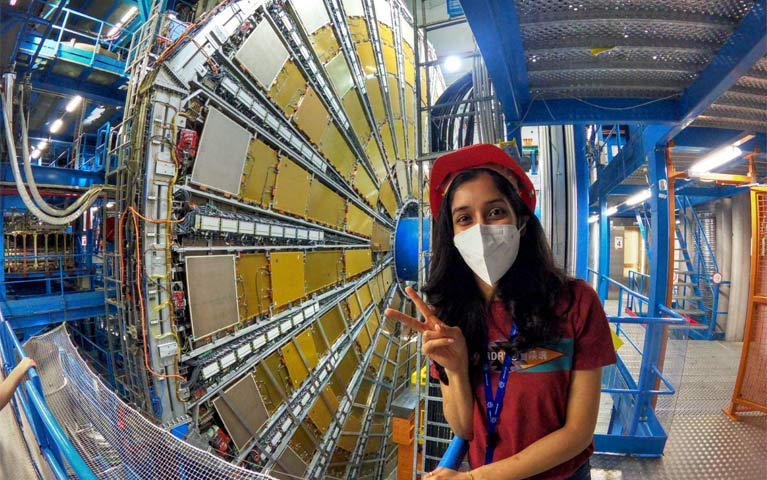Nisha Lad
I intend to pursue an academic career straddling the interface between fundamental physics and mathematics, guided by modern tools such as machine learning and Bayesian inference.

1 January 2019
Project title: Graph Neural Networks for fast track finding in LHC data
Research Group: High Energy Physics
Supervisor(s): Prof Nikos Konstantinidis
Introduction:

Project description:
In particle physics collider experiments, reconstructing particle trajectories (tracks) in the detector is computationally one of the most challenging parts of experimental data analysis. A typical LHC detector contains many thousands of sensors measuring particle positions, with a total number of sensor channels up to hundreds of millions. The track finding (aka pattern recognition) problem is to associate individual measurements (“hits”) into sequences representing particle trajectories. The scale of the problem is enormous, given that the number of hits can be up to 400000 per event; the number of tracks - several thousands.
The current track finding algorithm adopted in the LHC experiments is based on the combinatorial track following from a subset of sensors into short track segments called seeds. As the seed number scales non-linearly with the number of hits, the corresponding, typically, close to cubical, CPU time increase creates huge and ever-increasing demand for computing power as the LHC will continue to increase the beam intensities over the next two decades. This motivates the research for novel methods in track finding, in particular those based on the machine learning (ML) techniques. The benefits of such an approach could lead to enormous savings in CPU needs over the next 20 years of life of the LHC. The aim of this project is to explore track finding methods utilizing a graph-based track model and graph neural networks (GNN), in order to predict compatible connections as well as iteratively extract track candidates. The main input features would involve track position measurements and cluster shape, which would be used to identify compatible hit-pair connections in the network. And the main techniques involved in pruning the graph network in order to extract track candidates would involve Gaussian mixture reduction via clustering, as well as using simplified Kalman filters as mechanisms for information propagation and track fitting.
First year group project: ONS (Twitter)
Placement:
 Close
Close

